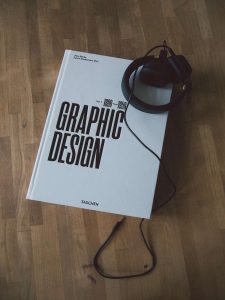Graphic designing
Graphic designing refers to the broad and dynamic domain wherein art, technology, and communication integrate as an integral part for the delivery of messages, problem-solving, and enhancement of user experience. It becomes very vital in industries such as advertising, web development, publishing, and branding. It is essentially done through the use of visual components such as typography, imagery, color, and layout, all combined in such a way that they are able to relay the intended message clearly across.

The roots of graphic design can be traced back to early forms of visual communication from cave paintings and hieroglyphics. However, modern graphic design began to take concrete form at the start of the 20th century with new technologies and emerging art movements.
Of all those influences, perhaps the Bauhaus movement, founded by Walter Gropius in Germany, has been rather influential in shaping contemporary design. It stresses simplicity, functionality, and the fusion of art and technology, developing a number of principles used today.
At the heart of graphic design is emotive hierarchy of attention, a way of arranging elements such that the viewer’s eye would be moved and focused on the most important information. This involves using size, color, contrast, and placement in a strategic fashion to create a clear and engaging layout.
Headlines of a magazine spread could be large and bold in order to get the attention, while the body text is small and subtle to permit the process of reading. The good thing about visual hierarchy is that it ensures that the audience will just glance over the content easily and deliver the key messages across.
Best Graphic Designing Courses
Another core aspect of best graphic designing is typography. Typically, typography involves font selection, size, spacing, and alignment. The type of font used can instantly offer insight into both the tone and readability of a design-a serif font may be traditional and dependable, while a sans-serif font should also be modern and clean. Its rules are based on traditional concepts, it also keeps renewing itself with new technologies and trends. Good designers will consider typography carefully in order to make sure it supports the rest of a design and communicates a message effectively.
Color theory is another crucial element to graphic design, designing, designer, best graphics designer, graphics services. Colors stir up emotions and can affect how things are perceived; thus, designers use them to their fullest advantage. Color relationships such as the complementary, analogous, and triadic schemes-by developing those, designers can provide appealing and harmonious designs.
For example, a bright palette would be exciting and energetic, while a muted palette would stir up calmness and sophistication. Besides, color accessibility is an important aspect of design due to the fact that one has to make his designs inclusive and easily interpretable by persons with color vision deficiencies.
Upon the arrival of digital technologies, all the traditional aspects of graphic design replaced countless methods and types of software a designer could develop and represent their ideas. Programs like Adobe Photoshop, Illustrator, and InDesign have now set the standard within the industry, enabling designers to express even the most minute detail with precision in their designs.
Digital media have also given way to wider boundaries in design, where designers are now working on everything from websites and social media through to mobile apps and interactive experiences.
Creativeness in Graphic Designing
While technology has evolved, traditional concept principles remain the driving force guiding graphic designing. Otherwise, success lies in the balance between creativity and functionality. A designer should descriptively create pieces that look good but still effectively communicate and fulfill the needs of the audience. Such an analogy or understanding requires insight into the target audience for a chance to adjust for each medium and context.

Graphic designers also need problem-solving skills aside from technical skills, and they need to pay great attention to detail. Designs have various challenges that must be faced, such as creating a brand identity that can stand out in an overcrowded market and designing user interfaces which can be intuitive and user-friendly.
Designers may frequently work with clients, marketers, and other stakeholders to understand their needs and convey them into visual form. It is a collaborative process wherein improvements are made by the collection of feedback and reconsideration of designs to arrive at the intended output.
Impact Of Graphic Designing
The impact of graphic design surpasses aesthetic appeal-it gives meaning to perception and drives behavior. Good design would enhance brand recognition, increase the level of consumer engagement, and present even the most complex data in an easily digestible format. A good logo can turn into a striking sign of a company’s identity, graphic designing, designer, digital media marketing, designing, designs, and could present data in an easy-to-understand format by visualization.
Designers, therefore, need to be abreast of the trends and emergent technologies through which this growth in graphic design is happening. Some of these trends shaping up in setting the future of graphic design courses include minimalism, responsive design, and use of artificial intelligence.
There is the application of minimalism because of clarity and simplicity, usually boosted by clean lines that focus on the essential elements. Responsive design makes the visual content best for different devices and screen sizes, enriching the user experience in turn. Artificial intelligence integration began to affect aspects of design, from automating repetitive tasks to creating new creative possibilities.

What Results Does Graphic Designing
Graphic designing is an ever-evolving field that requires creativity and technical knowledge to develop effective and compelling communications. Its rules are based on traditional concepts, but at the same time, it also keeps renewing itself with new technologies and trends.
The best graphical designer plays a very important role in influencing perceptions and solving communication problems, so these designers may already play a major role in shaping visual culture. In fact, graphic design can be considered as one of the strongest presences from print to digital media marketing and rightly considered to be integral to modern life. Thus, it is an exciting field for those who incline toward visual storytelling and problem-solving.
